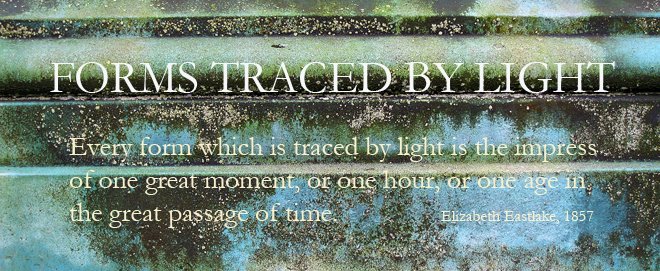
This is one of the shrines at the back of the Sanctuario de Chimayo, north of Santa Fe - a lace curtain with rosettes, some feathers, tiny crosses made of straw and paper and string tied together, crosses on the stone base made of stuck-on chewing gum: all of them little acts of remembrance for individuals, or relics with some other private and indecipherable meaning: the subjects of prayers or hopes or memories.
And in the background is one of the two friends whom we were taking up to Chimayo and to Taos today, Yong Soon Min - wearing her 1932 tee shirt. Why - people kept stopping and asking us, here and in Taos - why 1932? So Yong Soon tells them, and hands out her card:
WEARING HISTORY
I am wearing, close to my heart, one year of the 77 YEARS
since Japan established the first Comfort station in 1932.
During Japan's military advance in Asia, over 200,000 women
were coerced into sexual service for Japan's military. Those
who survived and are still living await justice.
In demanding that the Japanese government accept
unequivocal official responsibility for this war crime,
I wear a year every day.
This picture, therefore, sets up a wonderful dialogue between practical/aesthetically conveyed activism - in a form that invites, indeed demands interaction and conversation about the past, and the need to acknowledge and make reparation, and the kind of engagement with the personal past that is highly private: something existing between an individual, their memory, their conscience, their god. Given that the Japanese do practice formal visual memorialization (I'm thinking of all the paper cranes, for example, that roosted on a tree near the World Trade Center site back in late 2001), this does make one wonder what individualized forms of accepting responsibility for establishing or organizing "comfort stations" may have found their way, unknown, into public spaces.


No comments:
Post a Comment